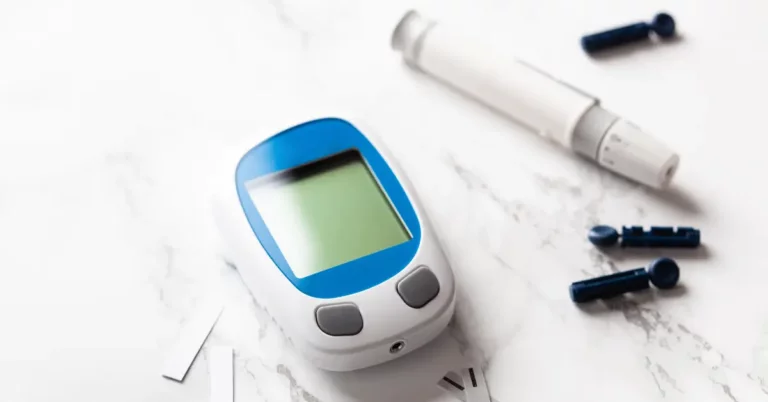Beginning January 1, 2024, a significant change in Medicare billing practices greatly impacted Federally Qualified Health Centers (FQHCs) and Rural Health Clinics (RHCs). For the first time, these centers can bill Medicare separately for Remote Patient Monitoring (RPM) and Remote Therapeutic Monitoring (RTM) services.
This update, utilizing Healthcare Common Procedure Coding System (HCPCS) code G0511, aligns with the growing emphasis on telehealth, promising to enhance patient care, especially in underserved areas. This article explores the implications of this pivotal change, focusing on how it will improve healthcare delivery and patient outcomes.
Understanding the New Billing Changes
The new change, introduced under the CMS-1784-F regulations, allows FQHC and RHC centers to bill Medicare separately for Remote Patient Monitoring (RPM) and Remote Therapeutic Monitoring (RTM) services.
The ability to bill for RPM and RTM services separately marks a turning point for FQHCs and RHCs. These services, essential in managing chronic diseases and enhancing patient care, especially in rural and underserved communities, were previously not distinctly billable under Medicare. With this change, these health centers can now seek reimbursement for providing innovative and remote healthcare solutions, thereby extending their reach and enhancing their service offerings.
Impact on FQHCs and RHCs
This billing update is more than just a procedural change; it’s a gateway to greater operational flexibility and financial stability for these centers. By billing separately for RPM and RTM, FQHCs and RHCs can potentially increase their revenue streams. This financial boost is crucial, especially considering the pivotal role these centers play in providing healthcare to underserved populations. Additionally, it incentivizes the adoption of more technologically advanced care models, aligning with the broader healthcare industry’s shift towards telehealth and remote care.
Emphasizing Quality and Compliance
It’s important to note that while this development opens new billing avenues, it comes with stringent compliance requirements. The services billed must be medically reasonable and necessary. Furthermore, they should meet all coding requirements and cannot duplicate services already paid for under the general care management code for an episode of care in a given calendar month. This ensures that the billing process remains transparent and focused on delivering genuine value to patients.
The Expanded Role of RPM and RTM in Healthcare
The inclusion of RPM and RTM in Medicare billing for FQHCs and RHCs is a game-changer, especially in managing chronic diseases and serving remote or underserved areas.
Enhancing Chronic Disease Management
RPM and RTM allow for continuous monitoring of chronic conditions, leading to timely medical interventions. This can result in improved patient outcomes and reduced hospitalizations, benefiting both the patient and the healthcare system.
Bridging Healthcare Gaps
These technologies are particularly beneficial in remote and underserved communities, providing consistent, quality care without the need for frequent travel. They make healthcare more accessible and encourage better adherence to treatment plans.
Cost-Effectiveness and Efficiency
RPM and RTM offer a cost-effective approach to healthcare delivery. They minimize the need for in-person visits, reducing strain on healthcare facilities and saving costs for patients. Additionally, they enable efficient resource allocation within healthcare settings.
Empowering Patients
By involving patients more actively in their health management, RPM and RTM enhance patient engagement and awareness. This empowerment often leads to better compliance with healthcare advice and lifestyle modifications.
Personalized Care Through Data
The data gathered through these monitoring tools enable healthcare providers to tailor treatments to individual patient needs, ensuring more effective and personalized care.
Billing Specifics and Compliance for RPM and RTM Services
The key to billing for RPM and RTM services lies in the proper use of HCPCS code G0511. This code has been expanded to include not only general care management but also community health integration and principal care management. Correctly applying this code is essential for FQHCs and RHCs to receive appropriate reimbursement for the remote monitoring services they provide.
Compliance and Medical Necessity
Compliance is paramount in this new billing landscape. Services billed under HCPCS code G0511 must be medically reasonable and necessary. Healthcare providers need to ensure that the services they are billing for meet all Medicare coding requirements and do not duplicate other services already covered under the general care management for a patient in a given calendar month. This prevents redundancy in billing and ensures that patients receive the most appropriate care for their needs.
Avoiding Duplication of Services
It is important for FQHCs and RHCs to carefully manage their billing to avoid duplication of services. Each service billed must be distinct and necessary for the patient’s care. This means that if a service provided overlaps with something already covered in a patient’s care plan for that month, it should not be billed separately under the new code. This careful attention to detail in billing practices is essential to maintain compliance and to ensure the financial integrity of the healthcare system.
Documentation and Record-Keeping
Effective documentation and record-keeping are critical in this new billing environment. Healthcare providers must maintain accurate and detailed records of all RPM and RTM services provided. This includes documentation of the medical necessity of these services, how they were provided, and how they fit into the patient’s overall care plan. Proper documentation not only supports compliance but also ensures a smooth billing process with Medicare.
The Future of Telehealth in FQHCs and RHCs
With the recent Medicare billing updates, FQHCs and RHCs are at the cusp of a new era in telehealth. This shift not only reflects current healthcare trends but also sets the stage for future developments in digital health.
Expanding Telehealth Services
The inclusion of RPM and RTM in Medicare billing is a clear indication of the expanding role of telehealth services in the healthcare system. FQHCs and RHCs can now more effectively integrate digital health tools into their practice, enhancing their ability to manage chronic conditions and provide comprehensive care. This expansion is expected to continue as technology evolves, offering new ways to deliver healthcare remotely.
Long-Term Impacts on Patient Care
The long-term implications of this billing change for patient care are substantial. With improved access to telehealth services, patients in rural and underserved areas will have better opportunities for consistent, high-quality healthcare. This can lead to improved health outcomes, reduced healthcare disparities, and greater patient satisfaction.
Technological Advancements and Integration
As technology continues to advance, we can expect to see more sophisticated RPM and RTM tools being integrated into healthcare practices. These advancements will likely include more user-friendly devices, better data analytics, and more seamless integration with existing healthcare systems. This technological evolution will further enhance the ability of FQHCs and RHCs to provide personalized and efficient care.
Policy and Reimbursement Changes
The current changes may pave the way for more policy and reimbursement updates in the future. As the benefits of telehealth become more evident, it’s likely that we will see continued support and expansion of telehealth services in Medicare and other insurance programs. This could lead to broader adoption of telehealth across various healthcare settings.
Preparing for the Future
To stay ahead in this evolving landscape, FQHCs and RHCs must continue to invest in telehealth capabilities, train their staff in the latest digital health technologies, and keep abreast of regulatory changes. By doing so, they can ensure they are fully leveraging the potential of telehealth to improve patient care and operational efficiency.
Conclusion
The introduction of separate Medicare billing for RPM and RTM services in FQHCs and RHCs marks a significant milestone in healthcare. As we move into 2024, these changes represent more than just a procedural update; they signify a broader shift towards embracing telehealth as an integral part of modern healthcare delivery.
Key Takeaways
Enhanced Patient Care: The ability to bill separately for RPM and RTM services opens new avenues for FQHCs and RHCs to provide comprehensive, continuous, and accessible care, particularly for chronic disease management and in underserved areas.
Financial Stability and Growth: These billing changes offer a potential increase in revenue streams, providing financial stability and growth opportunities for these critical healthcare centers.
Compliance and Quality Assurance: The emphasis on compliance and medical necessity ensures that these advancements in billing practices are aligned with quality patient care and efficient healthcare delivery.
Stay ahead in healthcare innovation with DrKumo‘s cutting-edge RPM and RTM solutions. Embrace the future of telehealth and transform patient care today.








